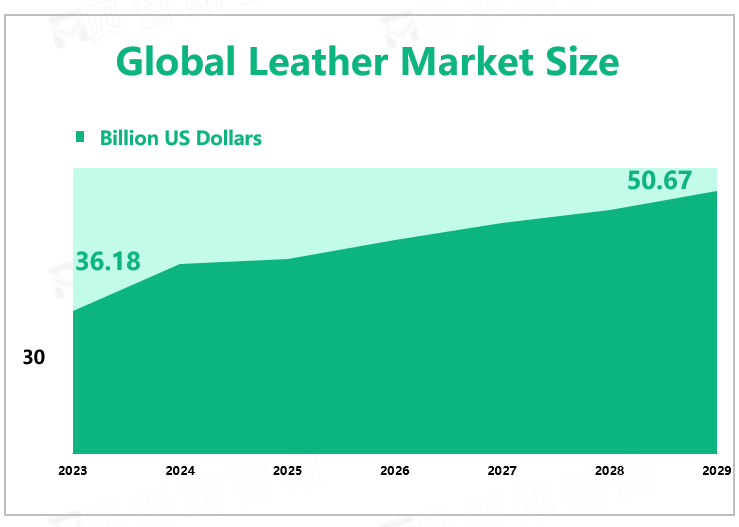Global Leather Market Overview
According to Global Market Monitor, the global leather market size will reach $36.18 billion in 2024 and is expected to grow to $50.67 billion by 2029.Leather is a durable and flexible material created by tanning animal rawhides and skins. The most common raw material is cattle hide. It can be produced at manufacturing scales ranging from artisan to modern industrial scale.
Europe is an Important Leather Market
In the international leather trade, Europe plays an important role. Leather is the largest international export product in the EU industry. In terms of raw materials and leather, the EU produces some of the highest-value calfskin. Most tanners in the EU are family-owned, with a strong regional concentration of small and medium-sized enterprises.
Some of the major factors contributing to the growth of the European market are the large number of local and international players, new products and technologies, the rise of online shopping, and the use of social media platforms. Rising fashion awareness, rising disposable income, and growing demand for attractive bags, with consumers increasingly looking for high-quality items, the demand for leather goods such as duffel bags is driving the demand for leather goods such as duffel bags, especially in the luxury segment. In addition, with the strong influence of fashion-driven countries such as France and Italy, the region is an important leather market.
China, a global leader in leather production and exports, annually manufactures over 4 billion square feet of leather. In 2023, China exported leather, fur, and related products worth USD 96.98 billion, according to the China Leather Industry Association.

In the apparel and footwear industry, the increasing use of leather due to its durability and premium appearance makes it an excellent choice for the production of apparel and footwear, which is currently one of the main factors driving the absorption of the leather market. In addition, consumers prefer compact and stylish leather goods and luggage, and men's accessories such as leather bracelets, necklaces, and gloves are becoming more popular as fashion trends change. As a result, fashion trends are likely to change significantly in the coming years, which will help the industry grow.
Market News
Luxury craftsmanship business LVMH Métiers d’Art has finalized an agreement to increase its stake in the Spanish tannery Riba Guixà from 20% to 80%. Founded in 1932, the Spanish tannery Riba Guixà produces both finished and half-processed leather. LVMH Métiers d’Art – a division of luxury group LVMH – has brought together and coordinates a global network of artisan companies that includes farms, exotic and non-exotic leather tanneries, the world of fabrics and manufacturing, and investments in research and development aimed at innovation in production processes.
|
By Type |
Artificial Leather |
|
Animal Leather |
|
|
The artificial leather segment contributes the largest share. |
|
|
By Application |
Clothing |
|
Furnishing |
|
|
Automotive |
|
|
Bags |
|
|
Others |
|
|
The footwear segment occupies the biggest share. |
We provide more professional and intelligent market reports to complement your business decisions.